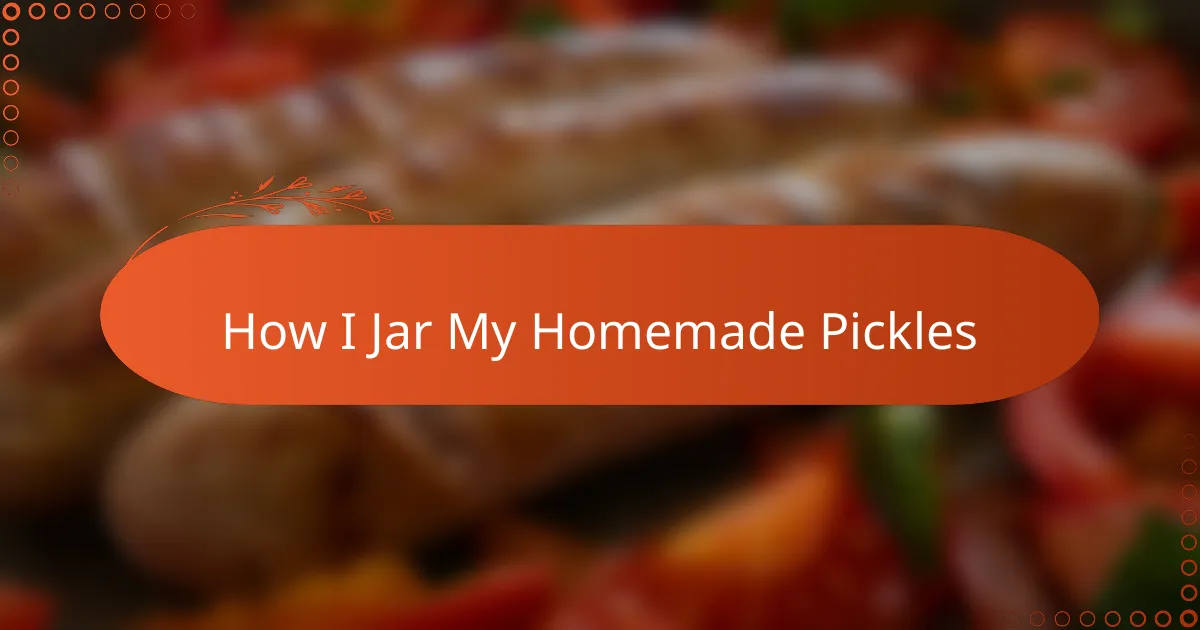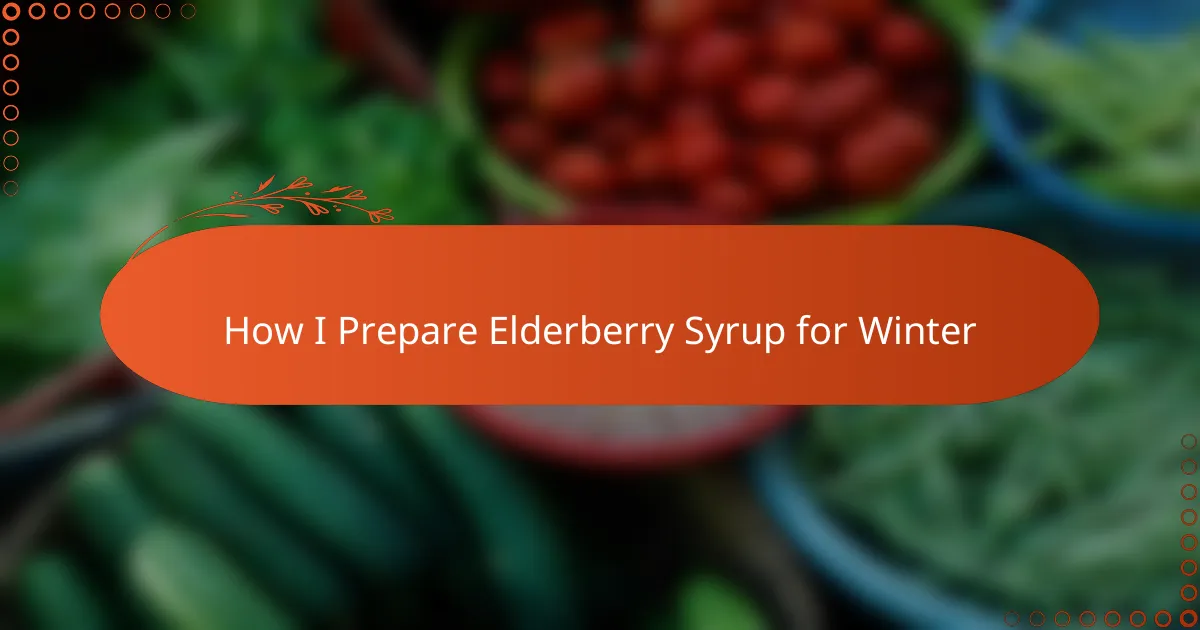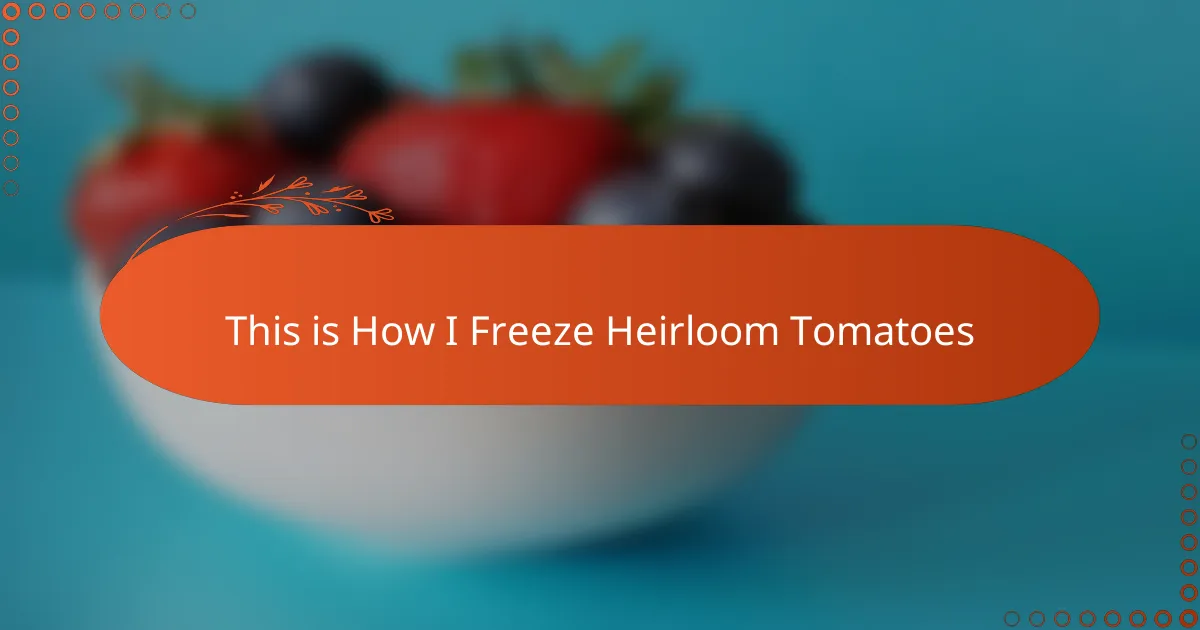Key takeaways
- Homemade pickles rely on the balance of quality ingredients, personal taste preferences, and careful timing for complex flavors.
- Essential tips include using pickling salt, properly sterilizing jars, and ensuring a tight seal for optimal preservation.
- Experimenting with different spices and brining techniques enhances the uniqueness of each pickle batch.
- Avoid common mistakes like rushing sterilization and misaligning jar lids to ensure successful pickling outcomes.
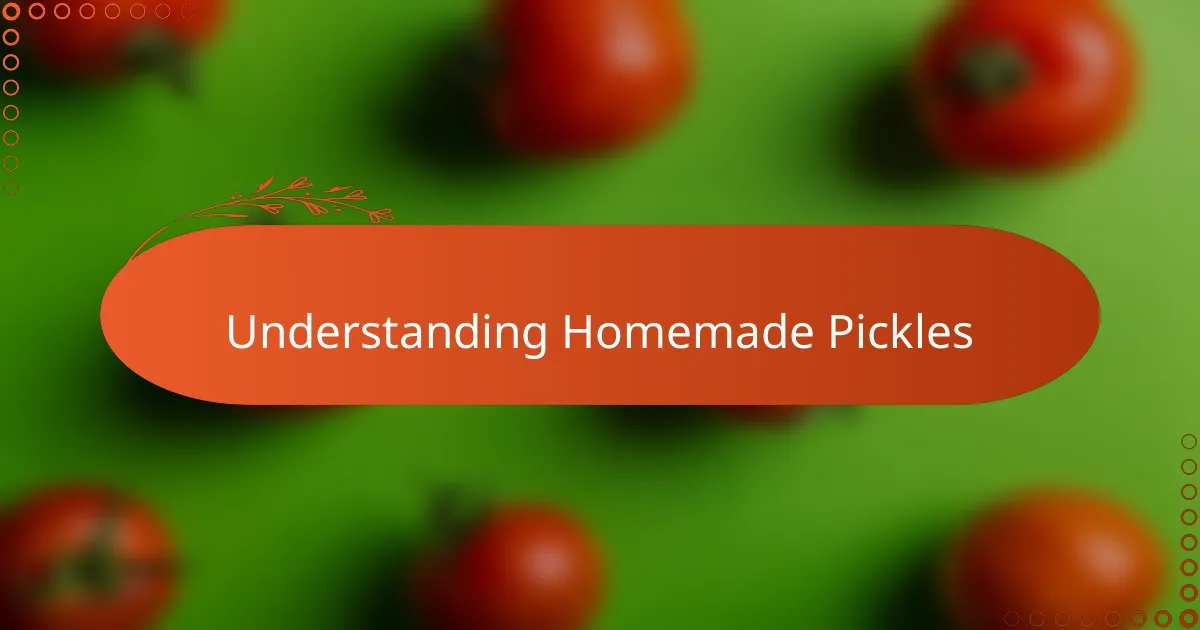
Understanding Homemade Pickles
Homemade pickles have always fascinated me because they capture the magic of transformation—simple cucumbers turning tangy and crisp through natural fermentation or quick brining. Have you ever wondered what makes a pickle truly homemade? It’s the balance of ingredients and the care in timing that bring out those complex flavors you just can’t get from store-bought jars.
From my experience, understanding the science behind pickling deepens the joy of this process. The vinegar or fermentation creates an environment where good bacteria thrive, preserving the cucumbers and turning them into something lively and delicious. It’s like nurturing a tiny ecosystem in your kitchen, which always feels rewarding to me.
I’ve found that knowing your own taste preferences is key to mastering homemade pickles. Do you prefer them crisp or soft, sweet or sour? Experimenting with different spices and brine concentrations is part of the fun—I’ve lost count of how many batches I’ve tweaked before landing on my favorites. Each jar becomes a reflection of my mood and creativity at that moment.
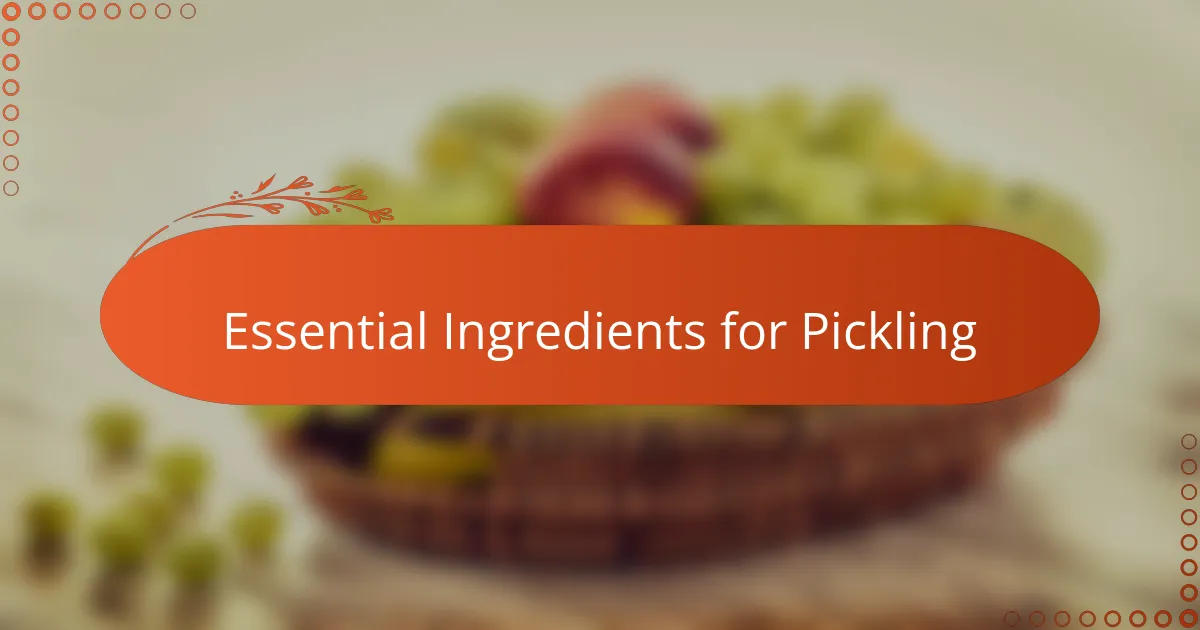
Essential Ingredients for Pickling
When I first started pickling, the essential ingredients seemed straightforward: cucumbers, vinegar, salt, and water. But I quickly realized that the quality and balance of these basics define the entire flavor. Have you noticed how a splash of white vinegar versus apple cider vinegar can completely change the tang? That subtle difference fascinated me and made me more mindful of each element.
Salt is more than just seasoning; it’s the backbone of the brine. I learned to use pickling salt specifically because it dissolves cleanly without adding any unwanted minerals. This made me appreciate how a tiny detail like salt type affects the texture and fermentation, something I hadn’t considered before in my early attempts.
And then, there are the aromatics—garlic, dill, mustard seeds—that transform a simple pickle into something truly personal. I’ve found myself experimenting with different herb combinations, each batch telling a new story. It made me wonder: what if I add a pinch of chili flakes or a few peppercorns? Those little tweaks keep the process exciting and deeply satisfying.
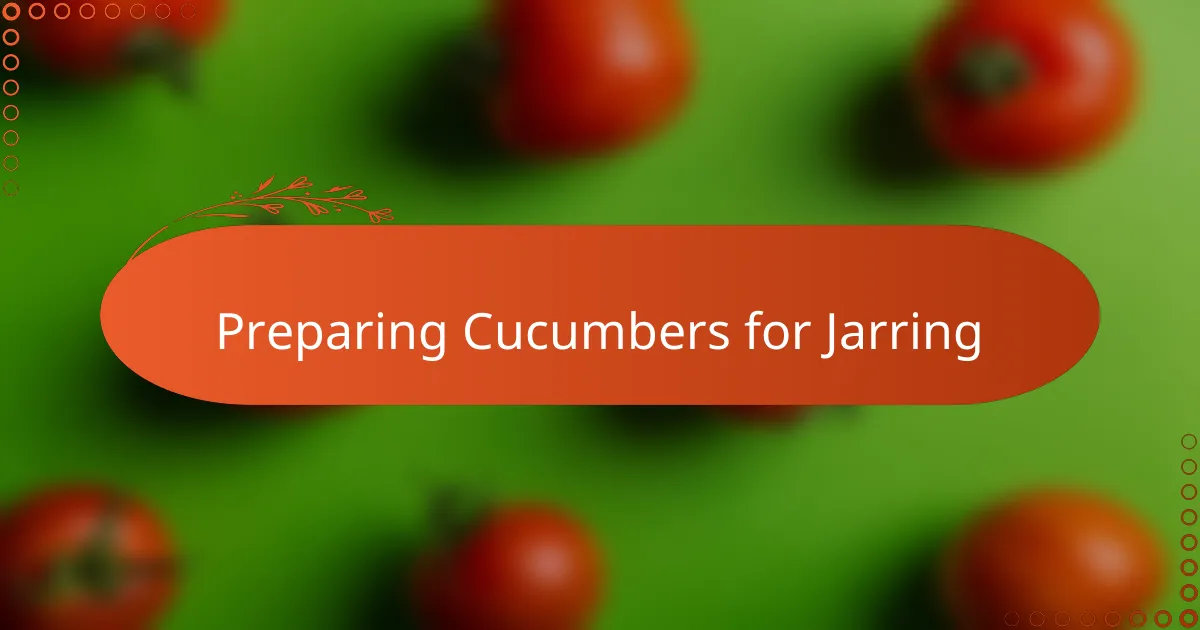
Preparing Cucumbers for Jarring
Before I even think about jarring my cucumbers, I make sure to choose ones that are firm and fresh. I remember the first time I used cucumbers that were a bit overripe—my pickles ended up mushy, which was a big disappointment. It surprised me how much the quality of the cucumber alone influences the final crunch.
Washing and trimming the cucumbers are simple steps, but they’re crucial. I like to give each cucumber a gentle scrub to remove any dirt, then cut off the blossom end because I read that it contains enzymes that can soften the pickles over time. That little detail really improved my results and made me feel like a true pickle pro.
Sometimes, I slice my cucumbers into spears, other times into rounds—it all depends on my mood and how I plan to use them. Have you ever noticed how the shape affects the pickle’s texture and taste? From my experience, spears tend to stay crunchier, which I find perfect for snacking.
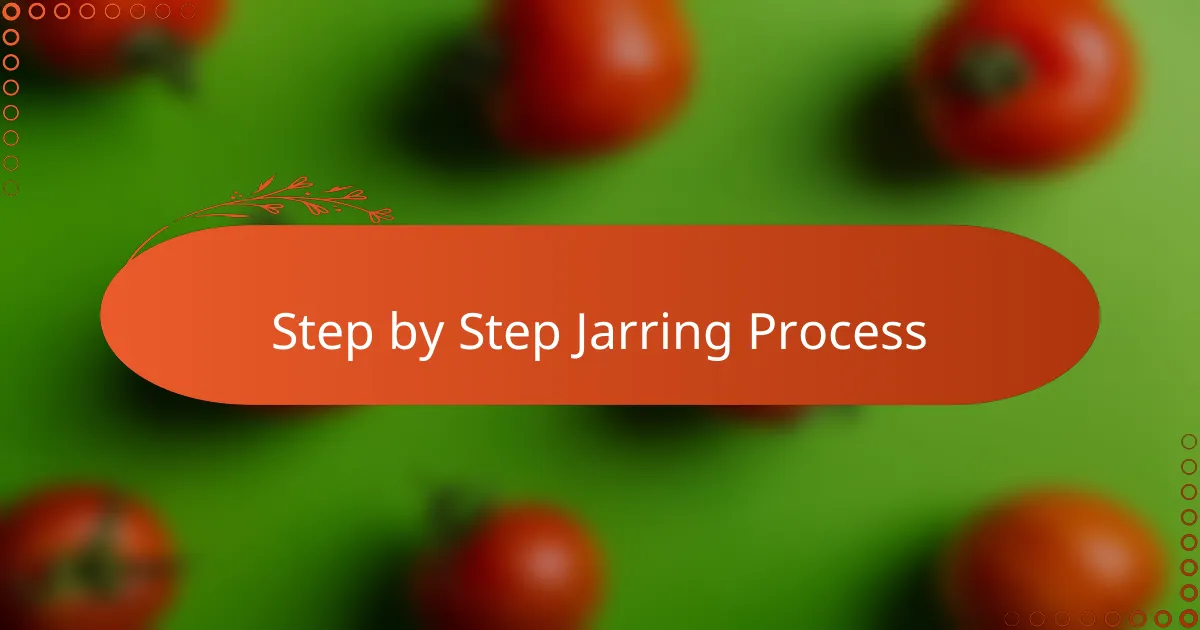
Step by Step Jarring Process
Jarring my homemade pickles feels like a ritual I look forward to every time. I carefully sterilize my jars—cleanliness is non-negotiable because I want my pickles to stay fresh and safe, not ruined by stray bacteria. Have you ever had a batch fail because the jar wasn’t properly prepared? That taught me that this step truly sets the stage for success.
Once the jars are spotless, I pack the cucumbers snugly but without crushing them. I love arranging them tightly; it somehow feels like I’m tucking them in for a cozy brine bath. Adding the aromatics and pouring in the hot brine last feels like the grand finale—this is when everything starts coming to life, and I can almost taste the tangy goodness ahead.
Sealing the jars tightly is the last, yet critical, step. I learned early on that a good seal prevents spoilage and locks in flavors, which makes me double-check each lid with care. Then, placing the jars in a cool dark spot feels like putting my pickles into a little waiting room before they transform—patience here is worth every crunchy bite I get later.
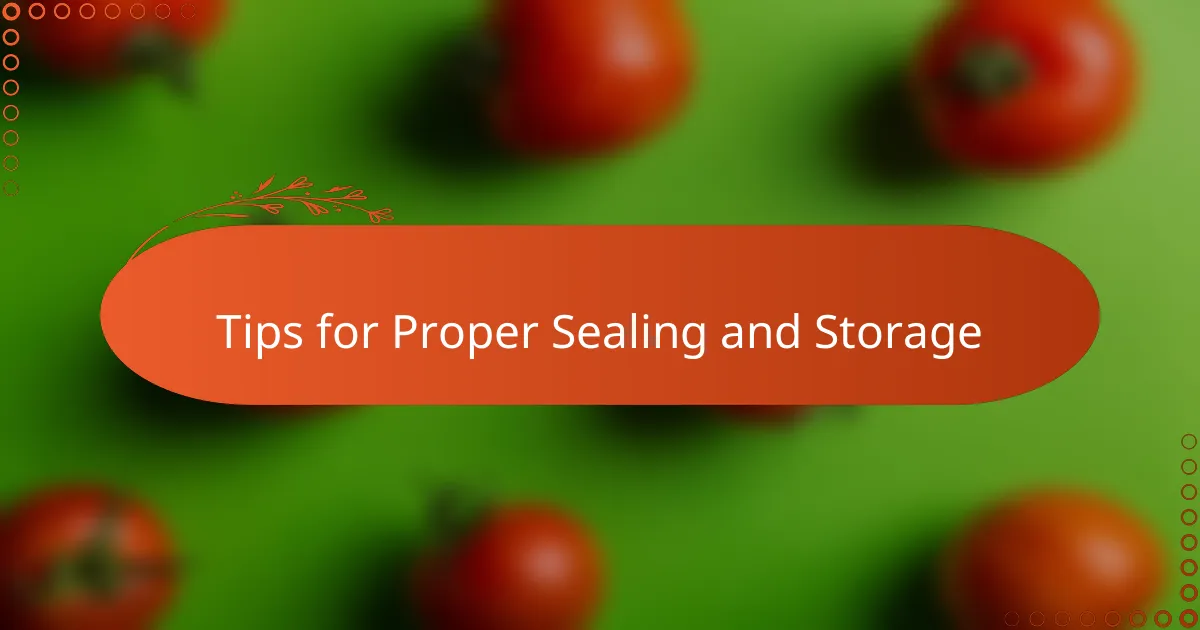
Tips for Proper Sealing and Storage
Sealing the jars properly has always felt like the final handshake in the pickling process for me. I remember one batch where I underestimated the importance of a tight seal; the lids popped prematurely, and my excitement quickly turned into frustration. That experience taught me to press down firmly and ensure the bands aren’t overtightened—just snug enough to create that essential vacuum.
Storage is another factor that kept me curious for a long time. Placing my sealed jars in a cool, dark pantry feels like giving them the perfect environment to develop their flavors slowly and safely. Have you ever noticed how even a little sunlight or warmth seems to rush the fermentation or spoil the batch? From what I’ve learned, consistent coolness preserves the pickles’ crispness and tang, making patience a key part of the payoff.
I’ve also found that labeling each jar with the date lets me track how long they’ve been resting and helps avoid the “forgotten pickle” dilemma. This simple habit adds a sense of accomplishment when I finally open them weeks later, knowing they’ve had the time they need to reach their peak. Don’t you love that moment when you twist open a jar and get greeted with that perfect, crunchy bite? That’s why sealing and storing properly isn’t just practical—it’s the gateway to pickle success.
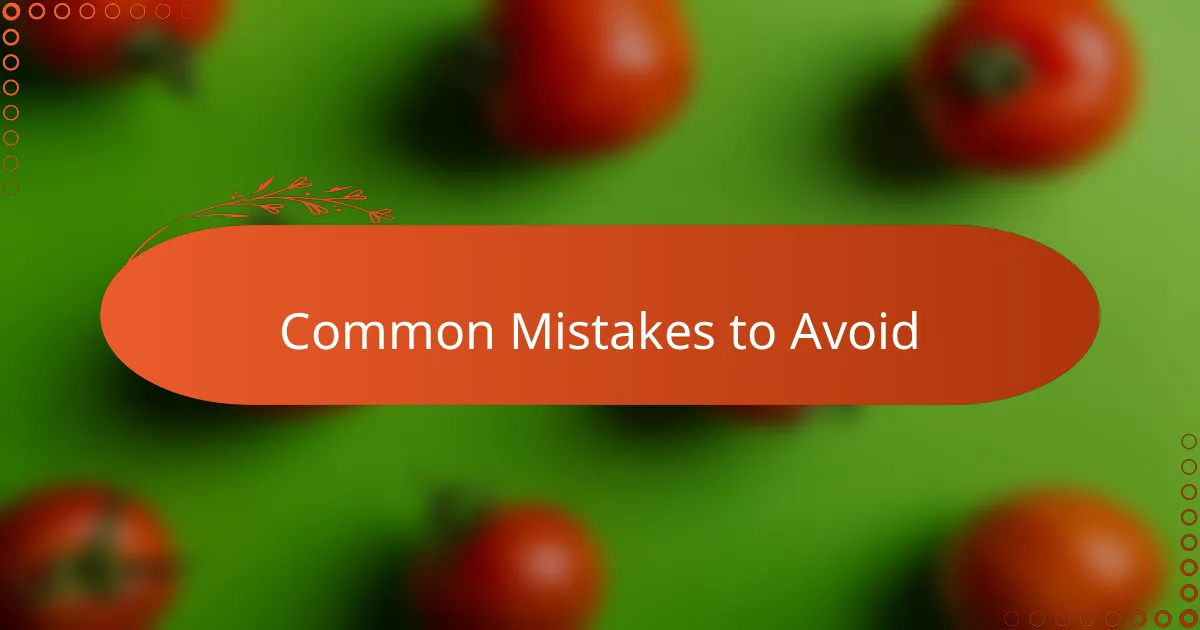
Common Mistakes to Avoid
One mistake I’ve seen many make—including myself early on—is rushing the sterilization of jars. I once skipped the thorough cleaning step, thinking it would be fine, only to find mold developing later. It made me realize that a clean jar isn’t just hygiene; it’s the foundation for safe, tasty pickles.
Another trap I fell into was using regular table salt instead of pickling salt. Have you ever noticed your brine turning cloudy or tasting off? That was my clue that minerals in the wrong salt can interfere with the fermentation or the pickling process. Since switching to the right salt, my pickles have been clearer and crisper, which really boosted my confidence.
Sometimes, I get eager and seal jars without checking if the lids are perfectly aligned or tightened just right. Have you ever heard that frustrating pop and realized the seal failed? That popped lid is like a warning bell—letting you know the batch might spoil or lose flavor. Now, I always double-check the seal before setting the jars aside, saving myself future disappointment.
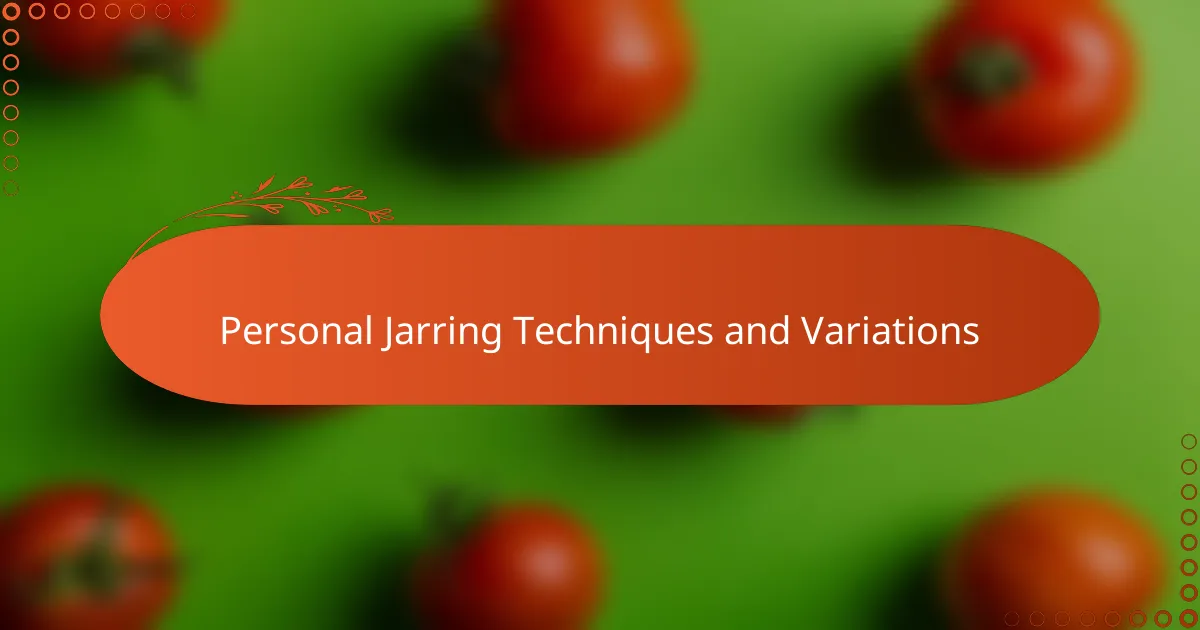
Personal Jarring Techniques and Variations
When it comes to jarring my pickles, I like to play around with a few personal touches. For instance, I’ve found that layering fresh dill sprigs and garlic cloves before packing the cucumbers adds a burst of aroma that I just can’t get enough of. Have you ever tried tucking in bay leaves or mustard seeds? These little variations have turned my routine jars into memorable flavor experiences.
I also sometimes switch up the brining technique depending on the batch’s intended lifespan. For quick pickles, I pour in a hotter, more concentrated vinegar brine straight from the pot, which helps me enjoy tangy snacks within a day or two. On the other hand, for longer fermentation, I opt for a cooler, milder solution that lets the cucumbers slowly develop complexity over weeks. It’s fascinating how such a simple change affects texture and bite.
Another technique I cherish is the “burp and press” method during fermentation. I open the jars daily to release gases and gently press the cucumbers below the brine, preventing air exposure that might spoil the batch. This hands-on practice makes me feel connected to the process, almost like tending a little garden inside each jar. Have you ever tried it? It adds a rhythm to pickling that I find oddly satisfying.
